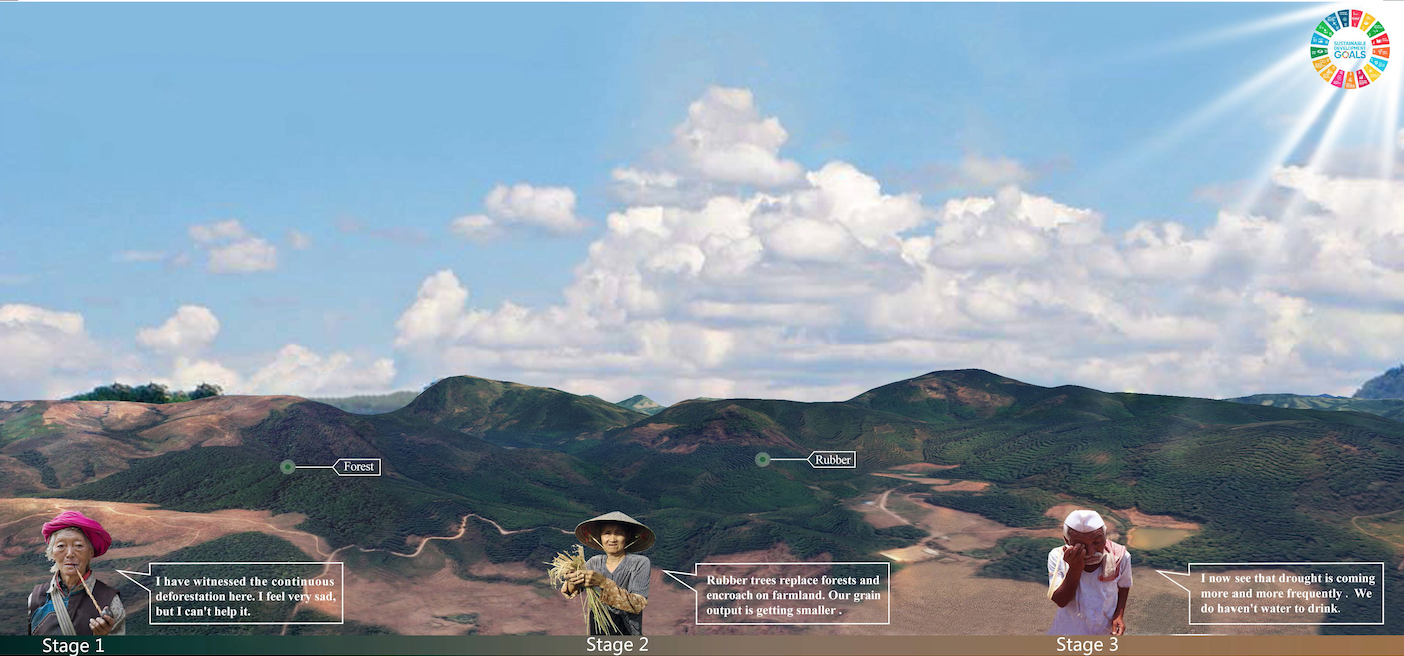
Transition from rubber plantations to tropical forests with green-blue strategies
Landscape Architecture Planning Studio
Huazhong University of Science and Technology
Teaching staff.
Supervisor: Han Yiwen, Dai Fei, Su Chang
Co-supervisor:
Students.
Authors: Wang Jiafeng
The tropical forests have been cut down, and then planting rubber trees have caused serious climate problems: forest deterioration, drought and water shortage.
The lack of water conservation function of the forest and strong water absorption capacity of rubber trees have
led to the problem of drinking water in the transition zone between China and Myanmar. Geniu village, rubber
cultivation accounting for 80%, is taken as a case study.
Our goal is to effectively mitigate conflicts between ecology and economy to realize the sustainable and cost-effi
cient development. Through papers and expert evaluation, we determine the standard value influencing rubber tree growth and water shortage factor. By with GIS analysis, we cut down rubber trees in the area unsuitable for rubber trees growth, and then forests are restored using green strategies: the pioneer restoration method and the establishment of vegetation types by elevation; water shortage is solved using blue strategies: intercropping, reservoirs and fog droplets collection. Finally, climate is reconciled because of optimized land use pattern. This design may provide some references for other regions facing similar forest restoration and drought.
